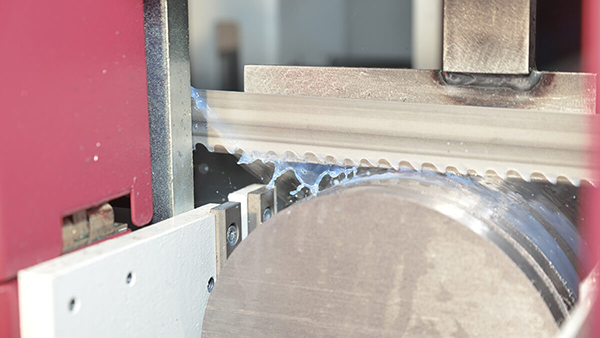
The conventional user of bandsaws and circular saw machines is familiar with sawing structural steels, tool steels, stainless steels, high-strength nickel-based alloys and titanium. But relatively few have ever machined pure elements.
For Hermsdorf-based HC Starck, sawing elements is daily practice. The company is a specialist in the supply of semi-finished products and components made from refractory metals such as molybdenum, tungsten, tantalum and niobium.
The company recently sought a suitable sawing solution for the task of cutting recycled Mo-ingots or rods made of high-purity tantalum (Ta) and niobium (Nb) with a cross-section of 160 x 60 mm, as well as round material up to 207 mm diameter, which are then cut into thin sheets. Since Behringer had no experience with element sawing applications, cutting tests took place at the company’s technology centre in order to assess various machine and tool combinations, and identify a suitable sawing solution.
“Positive sawing attempts with tantalum, which has a density of around 16.6 g/cm³, were ultimately the main reason for selecting with Behringer,” explains Andreas Mund, project engineer at HC Starck. “The sawing process is very hard; the belt rumbles constantly and you can hear how difficult it is to cut tantalum. In order to achieve reasonable cutting quality, you need a very stable base frame.”
This is where the solid machine base of the HBE321A Dynamic automatic bandsaw scores points, combining a stable frame made of vibration-damping grey cast iron and a precise guide system in a portal design. Control of the saw feed comes courtesy of a precision ball screw and servo motor.
For further information
www.behringer.net















